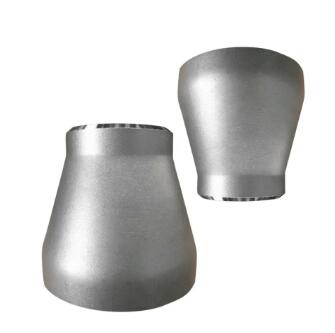Polishing Excellence: The Significance of Surface Finish in Stainless Steel Tee Pipe Fittings and Its Impact on Corrosion Resistance
2024-01-06
Introduction:
Stainless steel tee pipe fittings are renowned for their durability, strength, and corrosion resistance. However, one often overlooked but crucial factor in their performance is the surface finish. In this blog post, we'll delve into the significance of surface finish in stainless steel tee pipe fittings and explore how it plays a pivotal role in enhancing their corrosion resistance.
The Basics of Surface Finish:
The surface finish of stainless steel tee pipe fittings refers to the final texture or appearance of the metal surface after various manufacturing processes. It is achieved through mechanical or chemical processes designed to improve aesthetics, cleanliness, and, importantly, corrosion resistance.
Key Factors Influencing Surface Finish:
1. Mechanical Polishing:
- Abrasive Processes: Mechanical polishing involves the use of abrasives like grinding wheels or belts to remove surface irregularities, creating a smoother finish.
- Grades of Abrasives: The choice of abrasive materials and their grades determines the final texture and appearance of the stainless steel surface.
2. Electropolishing:
- Electrochemical Process: Electropolishing is an electrochemical process that removes a thin layer of material from the surface, resulting in a smoother and more corrosion-resistant finish.
- Improved Cleanliness: Electropolishing enhances the cleanliness of the surface, reducing the risk of contamination and corrosion.
3. Passivation:
- Chemical Treatment: Passivation involves the use of chemical solutions to remove contaminants and enhance the formation of a protective oxide layer on the stainless steel surface.
- Corrosion Resistance Boost: Passivation improves the corrosion resistance of stainless steel, particularly in aggressive environments.
Significance of Surface Finish in Corrosion Resistance:
1. Reduced Corrosion Vulnerability:
- A smooth and polished surface finish minimizes the presence of crevices, pits, or irregularities where corrosive substances could accumulate.
- Corrosion resistance is improved as the polished surface is less prone to corrosion initiation and propagation.
2. Enhanced Cleanliness:
- A polished surface is easier to clean and maintain, reducing the risk of contamination and corrosion caused by impurities or deposits on the stainless steel tee fitting.
- Improved cleanliness contributes to the long-term corrosion resistance of the fitting.
3. Oxide Layer Formation:
- The passivation process, often part of achieving a desirable surface finish, promotes the formation of a protective oxide layer on the stainless steel surface.
- This oxide layer acts as a barrier, preventing direct contact between the metal and corrosive agents.
4. Aesthetics and Longevity:
- Beyond functionality, an attractive and polished surface finish enhances the aesthetic appeal of stainless steel tee pipe fittings.
- A well-maintained appearance is often indicative of the care taken in the manufacturing process, reflecting a commitment to quality and longevity.
Conclusion:
In the realm of stainless steel tee pipe fittings, the significance of surface finish cannot be overstated. A carefully selected and well-executed surface finish not only enhances the visual appeal of the fittings but also plays a crucial role in improving their corrosion resistance. Whether achieved through mechanical polishing, electropolishing, or passivation, a smooth and clean surface ensures a longer lifespan for the fittings, reducing the risk of corrosion-induced failures and contributing to the overall reliability of piping systems. Engineers and manufacturers must prioritize surface finish considerations to ensure that stainless steel tee pipe fittings meet the highest standards of both aesthetics and functionality.



